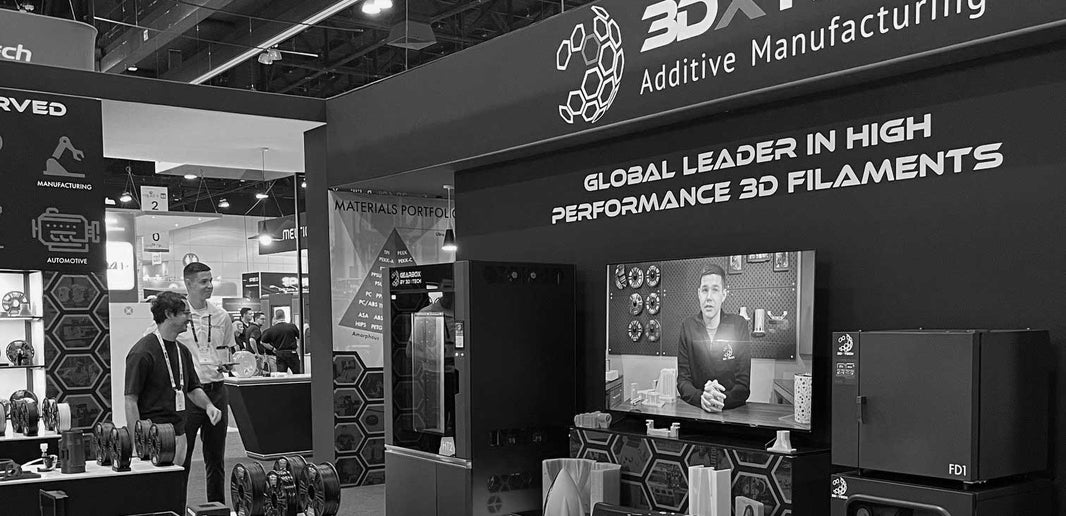3DXTECH Customer Case Study: Forte3D
Alfred Goodrich, the founder and CEO of Forte3D, recognized an opportunity to revolutionize the production of carbon fiber cellos. His vision was to lower production costs while enhancing cello design through additive manufacturing. To achieve this, Alfred turned to 3DXTECH’s consistent quality and expertise in carbon fiber filament. Recently, 3DXTECH was able to sit down with Alfred to discuss Forte3D’s journey and how our filament played a role.
The story of Forte3D:
Alfred started Forte3D during the COVID-19 pandemic, leveraging his passion for music and innovation. At the time, he owned a traditionally made carbon fiber cello and saw many ways the design of a carbon fiber cello could be improved. For one, building a carbon fiber cello using traditional methods is extremely labor-intensive and time-consuming, which drives the prices up. Alfred’s goal was to lower the cost and production time to create a more accessible instrument that could be bought by students and professionals alike. Traditional carbon fiber cellos also typically lack the desired sound quality. Alfred described this issue with sound quality as “too brash, brassy, and bright.”
Forte3D cellos are crafted to solve these issues and more. Alfred settled on a design that incorporates CNC-cut sheets of carbon fiber for the top and back with a 3D-printed neck, scroll, and ribs. Forte3D’s carbon fiber tops are concave compared to the tradition of convex tops, allowing the top to act like a speaker. By leveraging additive manufacturing in the design, Forte3D can “make professional-level instruments at a uniquely low price to increase accessibility to high-quality musical instruments for everyone”.
The biggest issues Alfred faced while starting this project came in the form of material knowledge, consistency, and precision. Alfred didn’t have any experience in the world of additive manufacturing, so he taught himself as he went along. Additionally, he needed to imitate the precision and consistency of an experienced luthier while 3D printing. This is where 3DXTECH was able to step in and address these issues.
Why Forte3D Chose 3DXTECH:
During his time researching what can be accomplished with carbon fiber filament, Alfred thoroughly examined 3DXTECH’s data sheets and engineering documentation. He even discussed the project with our team over the phone. These resources helped him better understand critical factors including tensile strength, which was integral to the design of the Forte3D cello. With technical information at his fingertips along with his deep understanding of cellos, Alfred began the design process. 3DXTECH’s data not only helped initiate the project, but also influenced his decision to partner with us.
As production of the Forte3D cello began, the precision and consistency of the process needed to be addressed. One of the biggest obstacles Alfred experienced came from inconsistencies in the filament. Alfred said that the construction of a cello is extremely specific, “like a clock.” He discovered that 3DXTECH carbon fiber reinforced filament allows him to print the most consistently. With our filament and years of producing carbon fiber cellos, Alfred is now able to “set it and forget it,” trusting that our filament will produce quality parts consistently.
In addition to the consistent quality of 3DXTECH filament, other key features play a significant role in the construction of a Forte3D cello. Carbon fiber reinforced filaments provide the strength and stiffness required by Forte3D while staying lightweight, allowing the cellos to be more durable and portable than traditional wood ones. Forte3D cellos benefit from the excellent thermal resistance of carbon fiber reinforced filament, maintaining stability and consistent sound even in the harshest environments. Finally, carbon fiber reinforced filament from 3DXTECH boasts an excellent surface finish, contributing to the cellos’ aesthetic appeal. All these characteristics help enhance the overall performance of Forte3D cellos.
Results:
The result is a cello that is more durable, affordable, and portable, all while offering an uncompromised playing experience and sound. Forte3D’s cello has even been referred to as “the best-sounding carbon fiber cello”. These achievements are made possible due to the process of additive manufacturing and quality filament from 3DXTECH.
Forte3D continues to innovate and produce affordable and accessible cellos. You can learn more about them at their website: https://forte3d.com/
If you’re an innovator like Alfred and need a filament that offers superior stiffness, ease of printing, improved dimensional stability, and light weight parts, check out our Carbon Fiber filaments.






